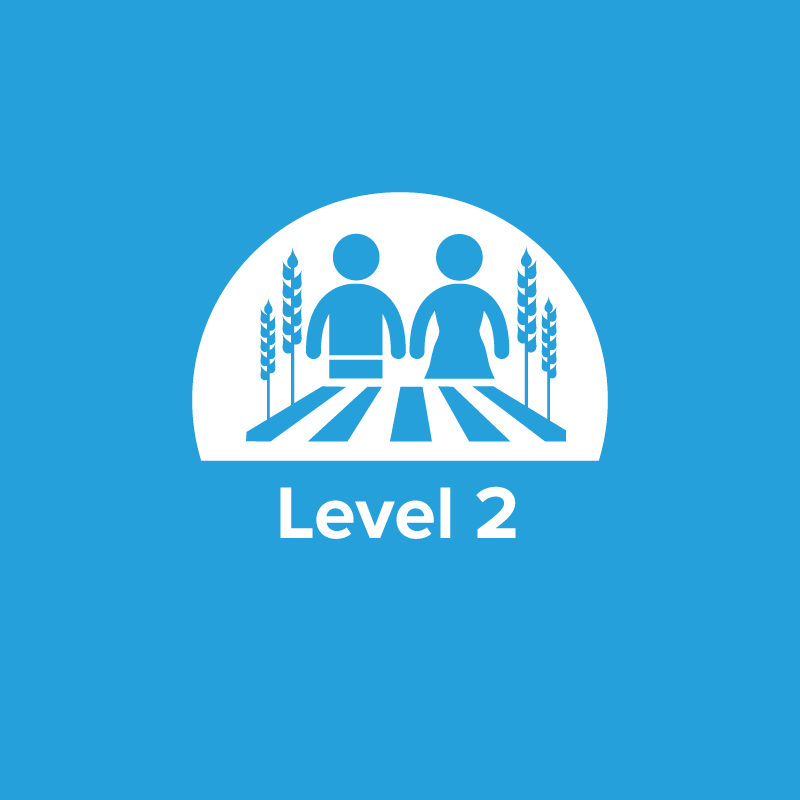Journey 2050 Lesson 2: Soil Nutrients (Grades 6-8)
Students will identify nitrogen, potassium and phosphorus as primary soil nutrients necessary in the production of abundant and healthy foods, describe various methods of replenishing soil nutrients that have been depleted by plant growth, discover how overall plant health impacts a plant’s ability to resist disease and pests and describe what best management practices are in agriculture to improve overall sustainability.

Background
Lesson Activities
Recommended Companion Resources
Credits
Author
Lindsey Verhaeghe, Andrea Gardner, Debra Spielmaker, and Sara Hunt | National Center for Agricultural Literacy (NCAL) and Nutrien
Acknowledgements
The Journey 2050 program was originally developed by Nutrien in collaboration with Calgary Stampede, Alberta Canola Producers Commission, Nutrients for Life Foundation, and Agriculture in the Classroom Canada. Authors and contributors were drawn from each of these organizations under the direction of Lindsey Verhaeghe (Nutrien) and Robyn Kurbel (Calgary Stampede.) The lessons were updated and revised in 2017 and 2022 with contributions from the original J2050 Steering Committee, the National Center for Agricultural Literacy, and the National Agriculture in the Classroom Organization.
Sources
- https://en.wikipedia.org/wiki/Bushel
- https://wagrains.org/wheat/
- https://www.ers.usda.gov/webdocs/publications/41880/33132_ah697_002.pdf
- https://en.wikipedia.org/wiki/Acre
- http://www.scidev.net/sub-saharan-africa/agriculture/news/fertile-soil-increases-crop-yields.html
- https://www.topcropmanager.com/the-role-of-fertilizer-in-growing-the-worlds-food-10387/
Standards
National Content Area Standards
- Career & Technical Education
- AFNR (Grades 6-8): Natural Resource Systems Career Pathway
- NRS.02.02: Assess the impact of human activities on the availability of natural resources.
- AFNR (Grades 6-8): Natural Resource Systems Career Pathway
- Social Studies – Economics
- Economics Standard 1 (Grades 6-8): Scarcity
- Objective (Grades 6-8): Identify what they gain and what they give up when they make choices.
- Economics Standard 2 (Grades 6-8): Decision Making
- Objective (Grades 6-8): Make effective decisions as consumers, producers, savers, investors, and citizens.
- Economics Standard 15 (Grades 6-8): Economic Growth
- Objective (Grades 6-8): Predict the consequences of investment decisions made by individuals, businesses, and governments.
- Economics Standard 1 (Grades 6-8): Scarcity
- Social Studies – History
- NCSS 7 (Grades 6-8): Production, Distribution, and Consumption
- Objective 1: Individuals, government, and society experience scarcity because human wants and needs exceed what can be produced from available resources.
- NCSS 8 (Grades 6-8): Science, Technology, and Society
- Objective 2: Society often turns to science and technology to solve problems.
- Objective 4: Science and technology have had both positive and negative impacts upon individuals, societies, and the environment in the past and present.
- NCSS 7 (Grades 6-8): Production, Distribution, and Consumption
- Science
- MS-ESS3: Earth and Human Activity
- MS-ESS3-3: Apply scientific principles to design a method for monitoring and minimizing a human impact on the environment.
- MS-ESS3: Earth and Human Activity
 Plants require 17 essential nutrients. The primary nutrients are nitrogen (N), phosphorus (P) and potassium (K). Each nutrient does many things for the plant but the basics are these:
Plants require 17 essential nutrients. The primary nutrients are nitrogen (N), phosphorus (P) and potassium (K). Each nutrient does many things for the plant but the basics are these: